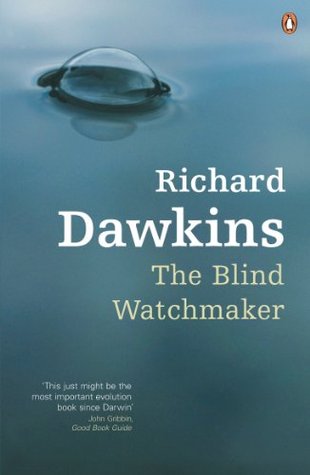More on this book
Community
Kindle Notes & Highlights
Read between
April 3 - June 21, 2020
In essence, it amounts simply to the idea that non-random reproduction, where there is hereditary variation, has consequences that are far-reaching if there is time for them to be cumulative.
The great majority of people that attack Darwinism leap with almost unseemly eagerness to the mistaken idea that there is nothing other than random chance in it. Since living complexity embodies the very antithesis of chance, if you think that Darwinism is tantamount to chance you’ll obviously find it easy to refute Darwinism!
The underlying basis for the intuitive incredulity that we all are tempted to feel about what Darwin called organs of extreme perfection and complication is, I think, twofold. First we have no intuitive grasp of the immensities of time available for evolutionary change.
Let’s represent the total time it took to evolve all these breeds of dog from a wolf, by one ordinary walking pace. Then, on the same scale, how far would you have to walk, in order to get back to Lucy and her kind, the earliest human fossils that unequivocally walked upright? The answer is about 2 miles. And how far would you have to walk, in order to get back to the start of evolution on Earth? The answer is that you would have to slog it out all the way from London to Baghdad. Think of the total quantity of change involved in going from wolf to Chihuahua, and then multiply it up by the
...more
Mutation is random; natural selection is the very opposite of random.
Chance is a minor ingredient in the Darwinian recipe, but the most important ingredient is cumulative selection which is quintessentially nonrandom.
Evolution has no long-term goal. There is no long-distance target, no final perfection to serve as a criterion for selection, although human vanity cherishes the absurd notion that our species is the final goal of evolution. In real life, the criterion for selection is always short-term, either simple survival or, more generally, reproductive success.
Stephen Gould, in his excellent essay on The Panda’s Thumb, has made the point that evolution can be more strongly supported by evidence of telling imperfections than by evidence of perfection.
The lifetimes of DNA messages (give or take a few mutations) are measured in units ranging from millions of years to hundreds of millions of years; or, in other words, ranging from 10,000 individual lifetimes to a trillion individual lifetimes. Each individual organism should be seen as a temporary vehicle, in which DNA messages spend a tiny fraction of their geological lifetimes.
What is the vital ingredient that a dead planet like the early Earth must have, if it is to have a chance of eventually coming alive, as our planet did? It is not breath, not wind, not any kind of elixir or potion. It is not a substance at all, it is a property, the property of self-replication. This is the basic ingredient of cumulative selection. There must somehow, as a consequence of the ordinary laws of physics, come into being self-copying entities or, as I shall call them, replicators.
If a theory of the origin of life is sufficiently ‘plausible’ to satisfy our subjective judgement of plausibility, it is then too ‘plausible’ to account for the paucity of life in the universe as we observe it. According to this argument, the theory we are looking for has got to be the kind of theory that seems implausible to our limited, Earth-bound, decade-bound imaginations.
Prey animals may end up spending relatively more of their budget on defensive weaponry than predators do on offensive weaponry. One reason for this is summarized in the Aesopian moral: The rabbit runs faster than the fox, because the rabbit is running for his life, while the fox is only running for his dinner.
Each new genetic improvement selected on one side of the arms race – say predators – changes the environment for selection of genes on the other side of the arms race – prey. It is arms races of this kind that have been mainly responsible for the apparently progressive quality of evolution, for the evolution of ever-improved running speed, flying skill, acuity of eyesight, keenness of hearing, and so on. These arms races don’t go on forever, but stabilize when, for instance, further improvements become too economically costly to the individual animals concerned.
Darwin, although he laid his main stress on survival and the struggle for existence, recognized that existence and survival were only means to an end. That end was reproduction. A pheasant may live to a ripe old age, but if it does not reproduce it will not pass its attributes on. Selection will favour qualities that make an animal successful at reproducing, and survival is only part of the battle to reproduce.
We have a population whose males are undergoing evolution of some characteristic such as tail length in widow birds, under the influence of female preference tending to make the tails longer and utilitarian selection tending to make the tails shorter. The reason there is any momentum in the evolution towards longer tails is that, whenever a female chooses a male of the type she ‘likes’, she is, because of the non-random association of genes, choosing copies of the very genes that made her do the choosing. So, in the next generation, not only will the males tend to have longer tails, but the
...more
Organisms can never be totally unrelated to one another, since it is all but certain that life as we know it originated only once on earth.


